Toledo, the first capital city, is a must see on your tour through Spain. Picturesquely sited on a hill above the River Tagus is the historic center of Toledo.
Behind the old walls lies much evidence of the city’s rich history. The Romans built a fortress on the site of the present-day Alcázar. The Visigoths made Toledo their capital in the 6th century AD, and left behind several churches.
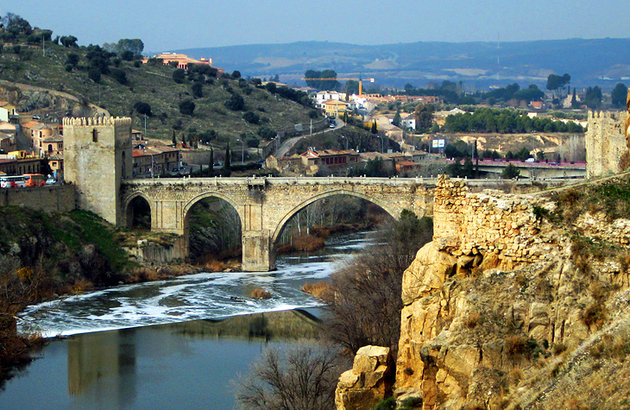
Spain-Toledo-bridge
In the Middle Ages, Toledo was a melting pot of Christian, Muslim and Jewish cultures, and it was during this period that the city’s most outstanding monument – its Cathedral – was built. In the 16th century the painter El Greco came to live in Toledo, and today the city is home to many of his works.
Medieval Capital of Spain, Toledo is located 68 kilometers (42 miles) from Madrid, making it a perfect day trip destination. It is easily reachable, by bus, train or car, and a major day stop on most tourist itineraries. Few of them, however, include staying overnight in this beautiful city. This makes Toledo perfect for exploring in early morning and evening, when all the crowds are gone.
We decided to do just that and stayed in a perfect hotel with the view: AC Hotel Ciudad de Toledo.
Perfect Day in Toledo, Spain
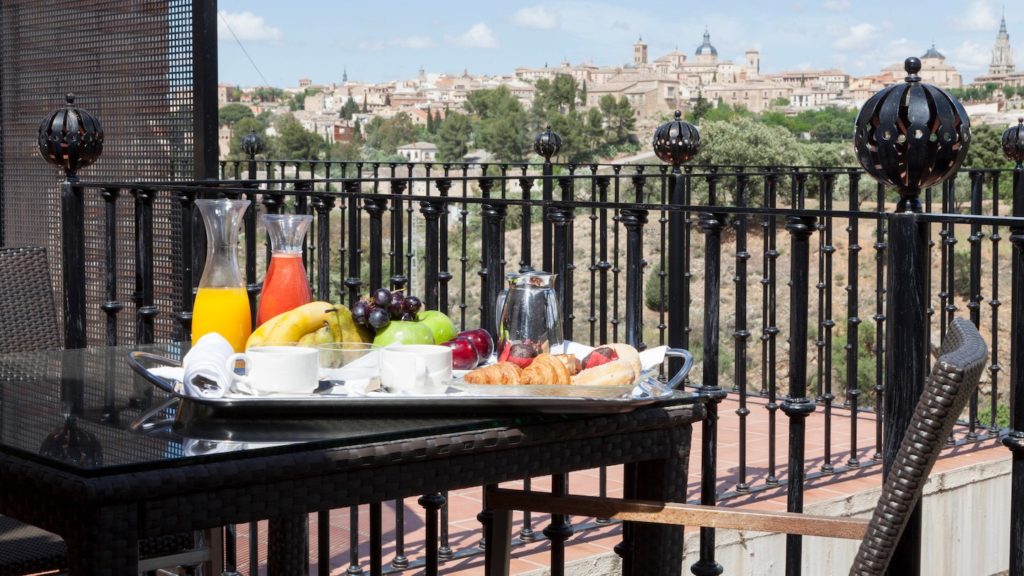
Toledo Breakfast
We got up for an early breakfast, and hit the Old Town, also known as the Imperial City, for having been the main venue of the court of Charles V, Holy Roman Emperor, and as the “City of the Three Cultures” for the cultural influences of Christians, Muslims and Jews reflected in its history.
As you can see, this is a part when we have to catch up on some of Toledo’s history, so you can fully enjoy and appreciate it.
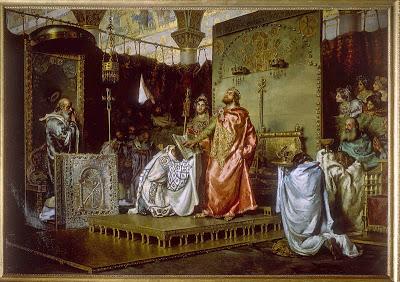
Brief History of Toledo
With a history stretching back to the Bronze Age, Toledo is one of Spain’s most diverse and engaging cities. It has a deserved reputation as a center of culture, learning and ethnicity.
At its peak in the 11th century, the city was a haven of tolerance, where Christians, Jews and Muslims all coexisted and shared their knowledge. This rich ethnic integration shaped the history of Toledo into the rich mosaic of Moorish, Jewish and Spanish heritage enjoyed today.
ROMAN ERA
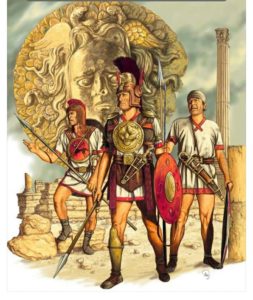
Punic-wars
The earliest recorded history of Toledo comes from the Romans, who captured this Iberian city in the year of 192 BC. Its geographic location in the heart of Spain ensured its importance to future generations of conquerors. Situated on a hill and protected by a deep river on no less than three sides, Toledo was an ideal defensive spot. The Romans soon established an impressive infrastructure, building aqueducts, stone bridges and grand public buildings like the rather ambitious Roman circus. However, nearly all traces of this prosperous Roman era have long been buried.
VISIGOTHIC TIMES
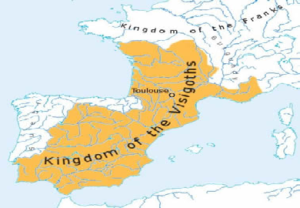
visigoths
When the Roman Empire fell, the Visigoths moved in and established control of the Iberian Peninsula. They made Toledo their capital from 570 AD until the Moors conquered them in 711 AD.
Their rule may have been relatively short, but the Visigoths left behind administrative elements like various rules and enforced laws, as well as a
centralized government and a taxation system that formed the foundations of modern Spain.
The only remains of their presence can be seen in the Santa Cruz Museum, on the Calle de Miguel de Cervantes.
THE MOORS
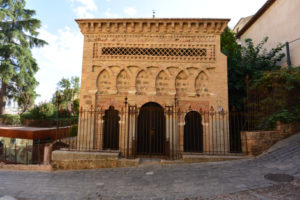
Moors
When the Moors conquered Iberia in the early 8th century, Toledo was rather distant from their center in Cordoba, to the far south. The wealthy educated Christians of Toledo were reduced to a minority, but they constantly rebelled against Moorish rule, trying to break away. This dark era of conflict saw many terrible events such as the Day of the Pit in 807 AD, when more than 5,000 Toldedans were invited to a party in the Alcazar (a fortified Moorish palace) and then barbarically executed upon their arrival, with their bodies being thrown into a giant pit.
Even this brutal act didn’t deter the rebellion, and in 932 AD the Moorish governor was forced to concede a certain level of autonomy to the Christians of Toledo. During this relatively peaceful era, the Alcazar palace and city walls were restored and the Alcantara Bridge built. As the rule in Cordoba began to fall apart, Moorish intellectuals soon fled here.
THE GOLDEN ERA
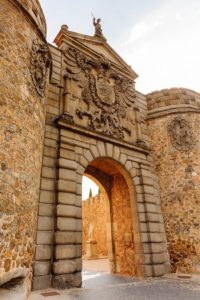
Toledo-Imperial-City
King Alfonso VI of Castile took advantage of the infighting between the Moors to take Toledo in 1085, ushering in the Christian era that would continue through today. This opened the doors on the golden era of Toledo history, when the city became something of a haven for ethnic tolerance between the Arabs, the Jews and also the Christians.
Arab workers and craftsmen built many of the city’s great structures, while Jews held positions of power. It wasn’t long before the city was flourishing in the arts, culture, science and intellectual debate. Toledo became the seat of the Catholic Church, ensuring its importance and influence for many decades to come.
THE CONVERSOS
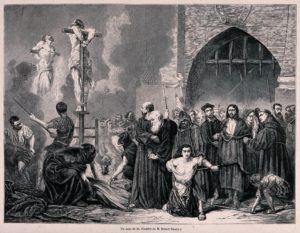
Converos
Things took a dark turn when Granada fell to the Spaniards in the year of 1492. This marked the end of cultural tolerance, as Jews and Muslims in Toledo were forced to either convert to Catholicism or flee the city.
Most of them fled during the period referred to as the Conversos.
The city was to become the new capital of Spain under Carlos I. His successor Felipe II later chose Madrid as the capital, where it remains today.
A FORGOTTEN CITY
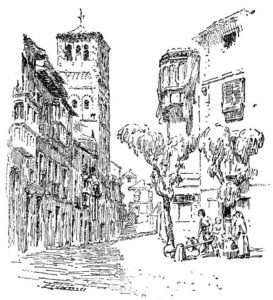
A-Forgotten-City
As the city’s power and influence faded into obscurity over the next two centuries, the city was very much left to its own devices. Fortunately, the magnificent architecture was not destroyed even when the Alcazar emerged as a symbol of fascist resistance during the Spanish Civil War.
Artists such as El Greco rediscovered Toledo’s beauty and helped it to rightfully return to the cultural map. In the mid-1980s, UNESCO decreed that the entire city had gained the title of World Heritage Site due to its wealth of preserved sites representing the diverse heritage that Toledo has experienced throughout its long history.
OK, now that you know how significant Toledo was in Spanish history, let’s enjoy it together!!
Alcantara Bridge
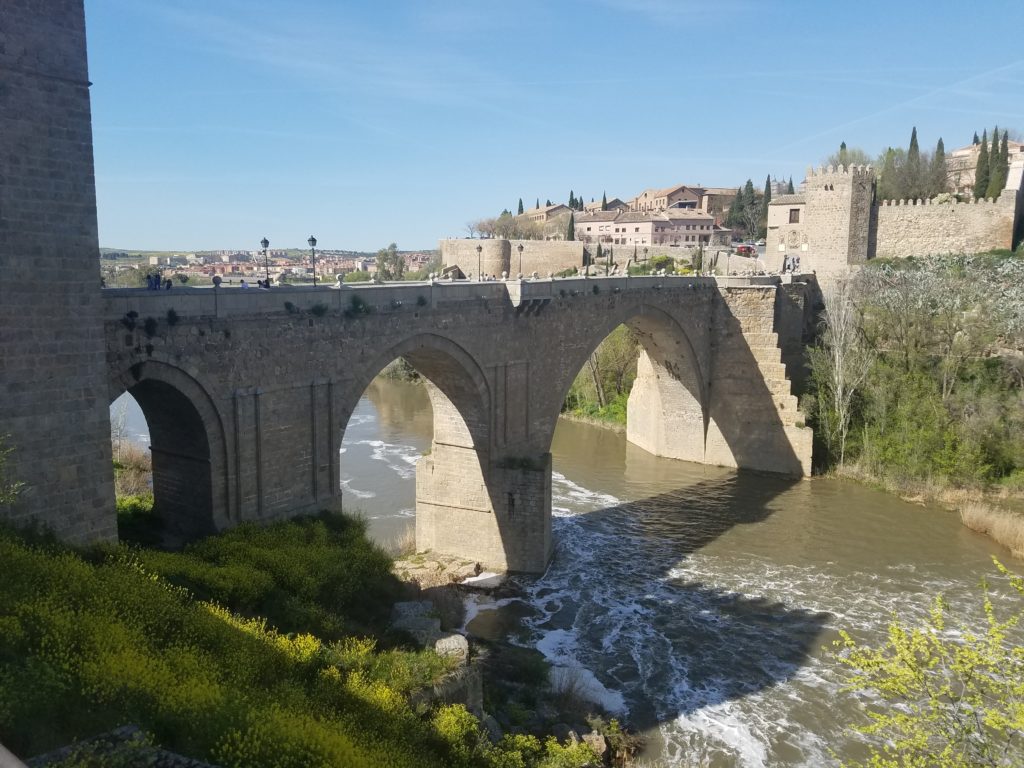
Toledo-Alcantara-Bridge
(referred by tourist, mistakenly, as the Roman Bridge)
We entered the city trough an ancient Alcantara bridge over raging river Tagus. It was a spectacular picture! Nice, quiet, just the sound of rushing water below us fed by melting mountain snow and Spring rains. You will not experience this sight in Summer, as Tagus river almost completely dries out and becomes series of small streams.
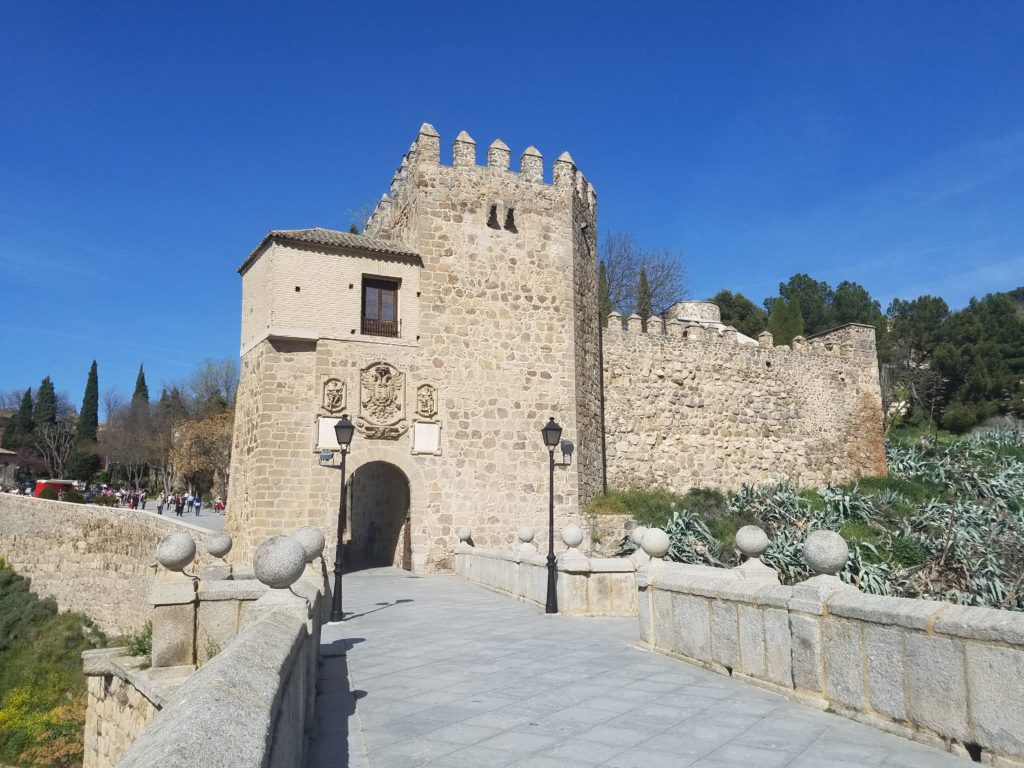
Entrance-Alcantara-Bridge
Toledo Cathedral
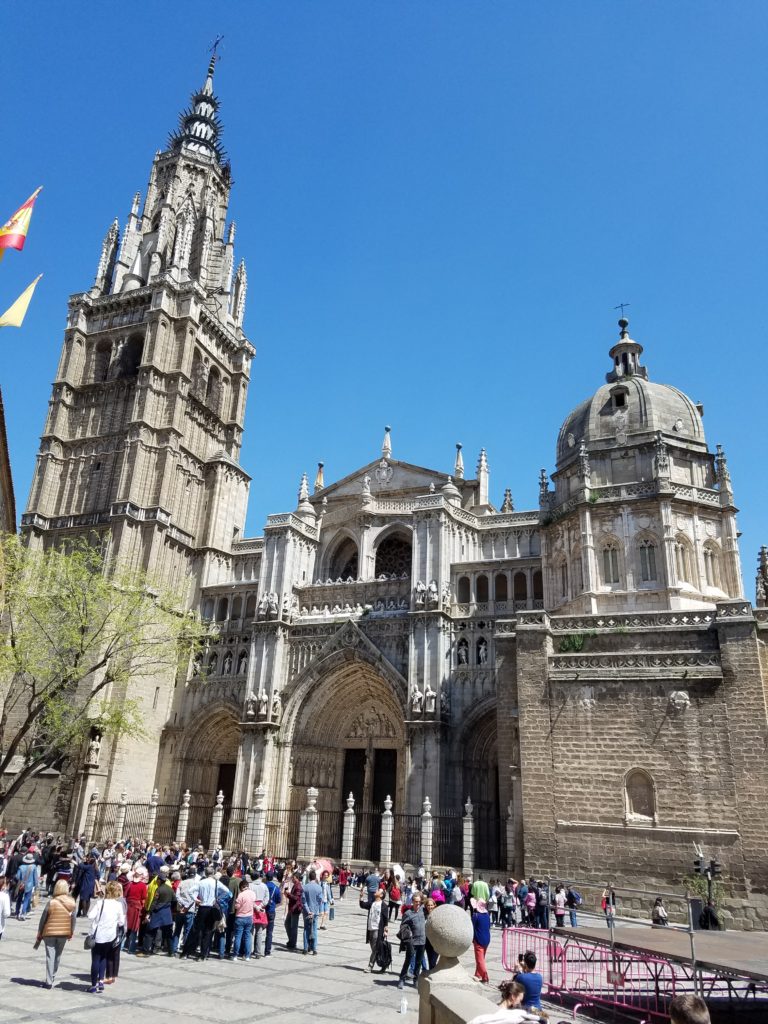
Toledo-Cathedral
After crossing Alcantara bridge, we started to climb through the city to reach one of the largest Cathedrals in the Christendom. The splendor of Toledo’s massive cathedral reflects its history as the spiritual heart of the Church in Spain and the seat of the Primate of all Spain. The Mozarabic Mass, which dates back to Visigothic times, is still said here today. The present cathedral was built on the site of a 7th-century church.
Work began in 1226 and spanned three centuries, until the completion of the last vaults in 1493. This long period of construction explains the cathedral’s mixture of styles: pure French Gothic – complete with flying buttresses – on the exterior; with Spanish decorative styles, such as Mudéjar and Plateresque work, used in the interior.
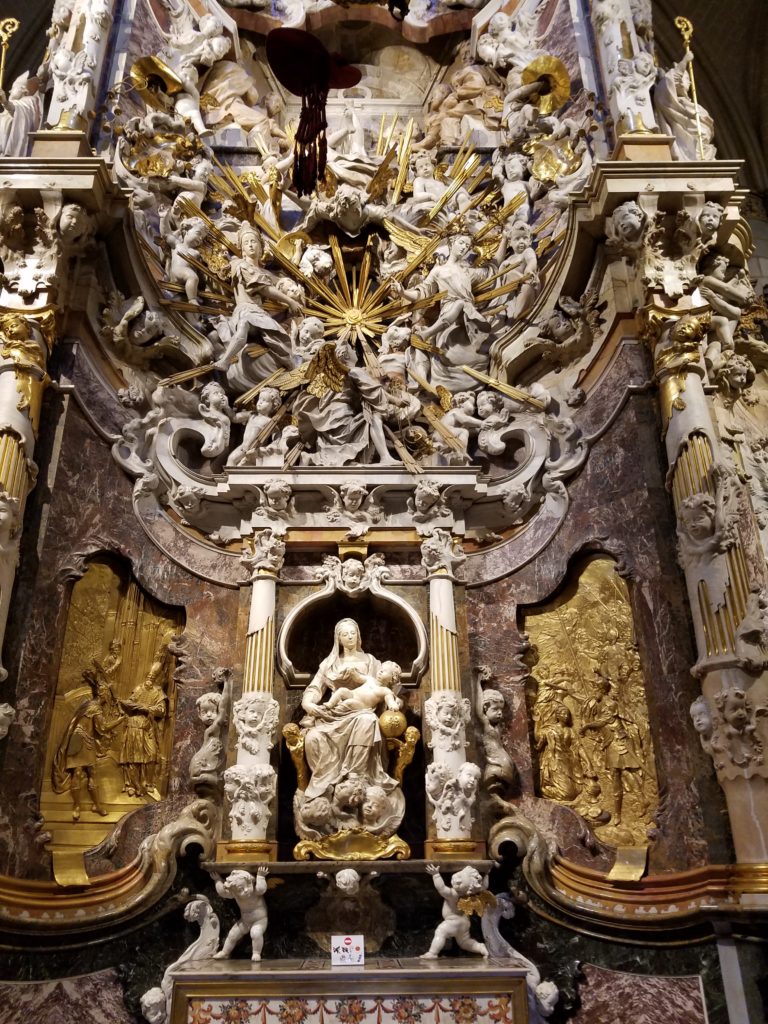
Toledo’s-Pieta
Cathedral inside, must see:
-Sacristy:
El Greco’s The Denuding of Christ, above the marble altar, was painted especially for the cathedral. If you like El Greco’s work, you will get to see a lot of his masterpieces throughout Toledo. It is a real treat. Also here are works by Titian, Van Dyck and Goya.
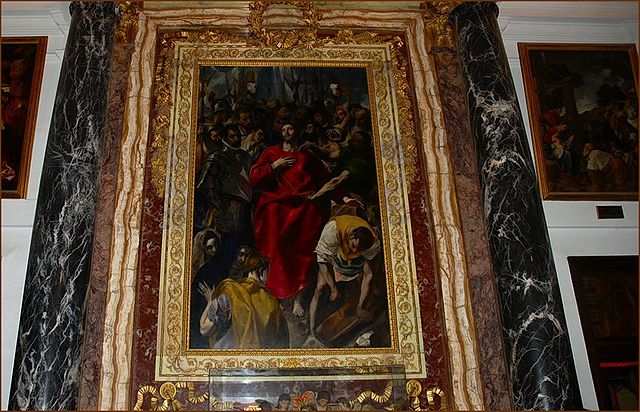
Toledo-Cathedral-El-Greco
Monstrance:
In the Treasury is the 16th-century Gothic silver and gold monstrance. It is carried through the streets of Toledo during the Corpus Christi celebrations.

Toledo-Monstrance
Choir :
The carvings on the wooden lower stalls depict scenes of the fall of Granada. The alabaster upper ones show figures from the Old Testament.
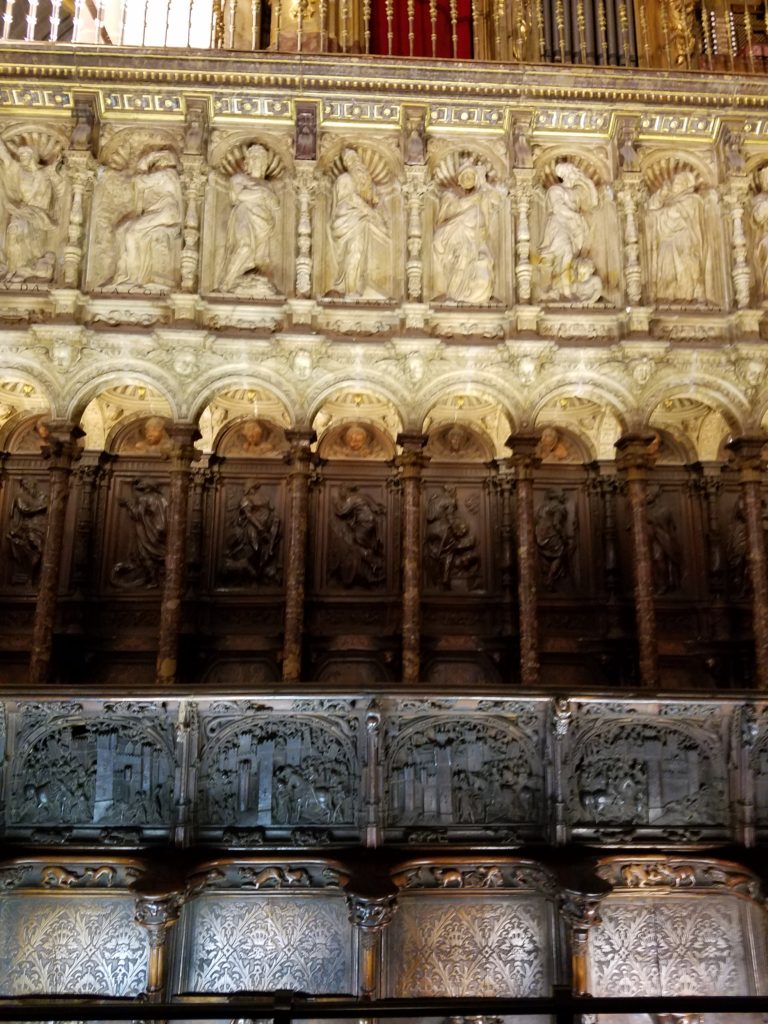
Toledo-Choir
High Altar, Reredos:
The polychrome reredos, one of the most beautiful in Spain, depicts scenes from Christ’s life.
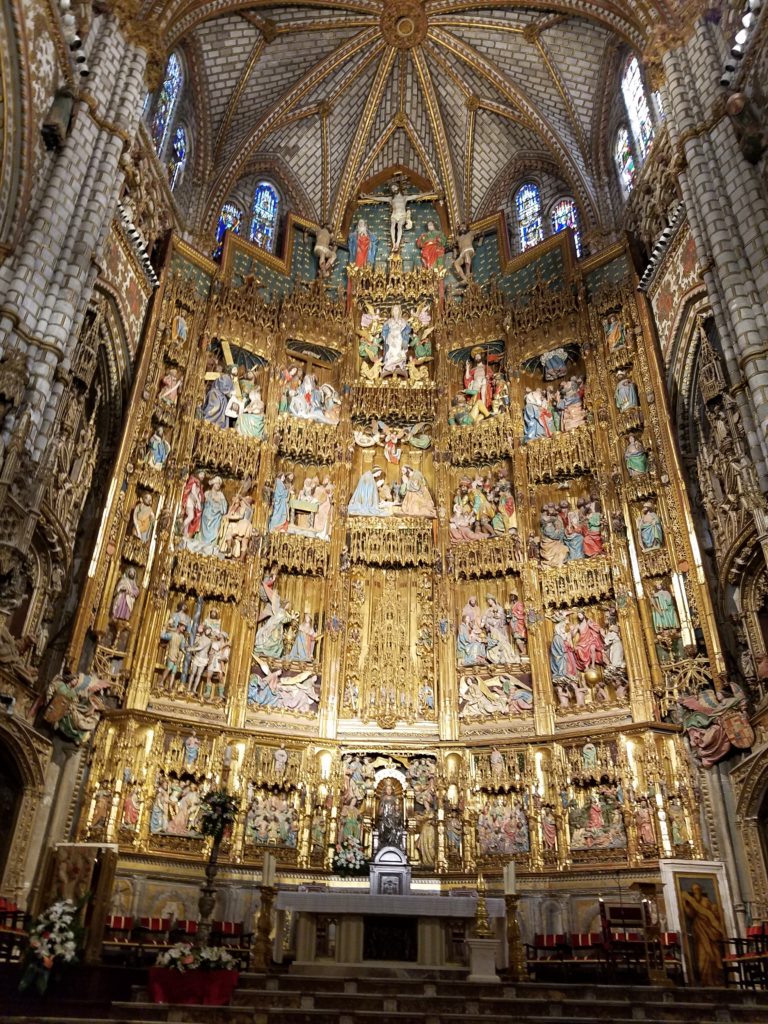
High-Altar-Reredos
Transparente:
This Baroque altarpiece of marble, jasper and bronze, by Narciso Tomé, is illuminated by an ornate sky light. It stands out from the mainly Gothic interior.
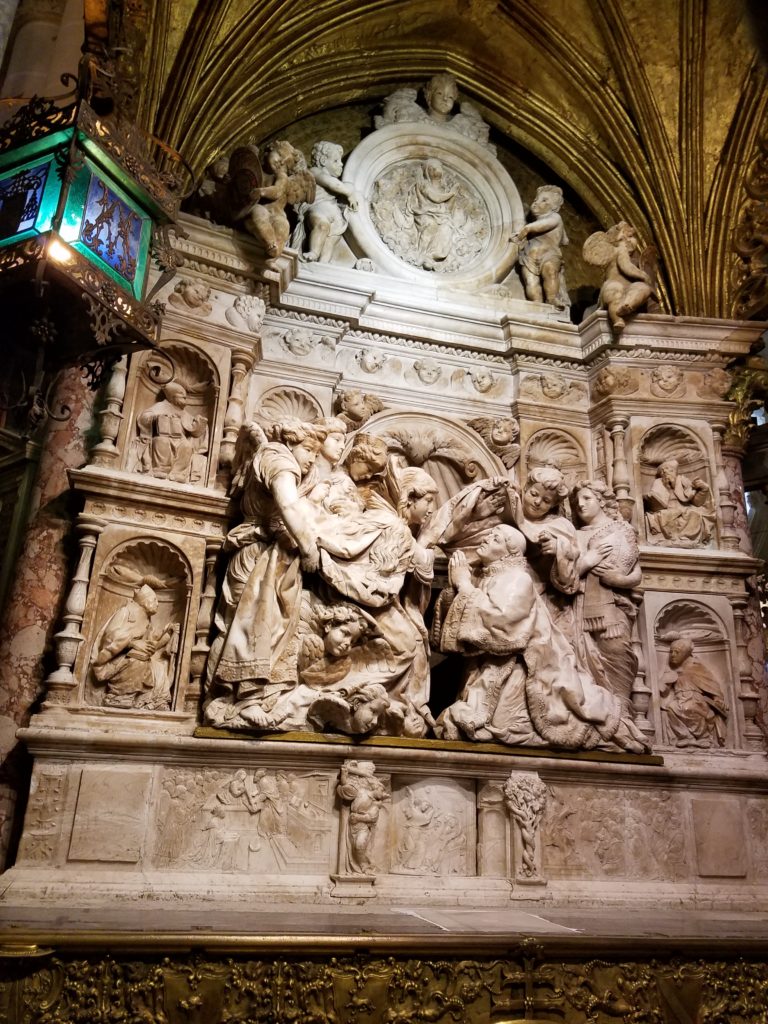
Transparente
Alcazar
After spending an hour or so enjoying art and architecture of the Cathedral, we headed for our next stop, Alcazar.
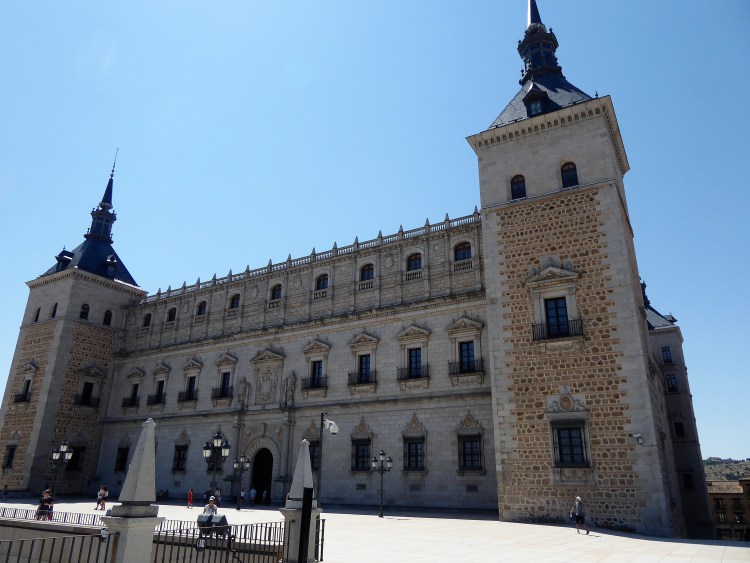
Alcazar
Charles V’s fortified palace stands on the site of former Roman, Visigothic and Muslim fortresses. Its severe square profile suffered damage by fire three times before being almost completely destroyed in 1936, when the Nationalists survived a 70-day siege by the Republicans. Restoration followed the original plans and the siege headquarters have been preserved as a monument to Nationalist heroism.
The former National Museo del Ejército was transferred from Madrid to this building, making the Alcázar the main army museum in Spain. The Borbón-Lorenzana Library (open to the public) contains 100,000 books and manuscripts from the 16th to 19th centuries.
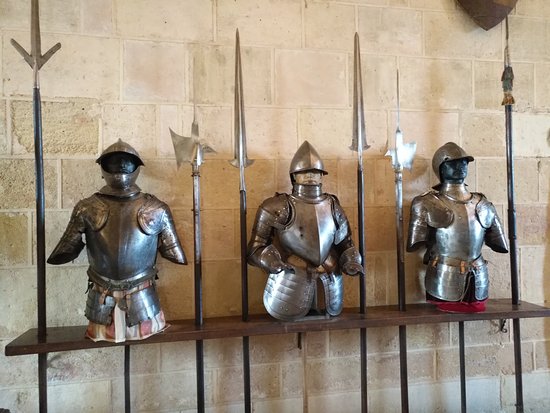
museum-alcazar
The Alcazar Army Museum contains wonderful collections of armor and weapons, almost as vast as those in Paris and London.
Lunch:

Toledo-cafe
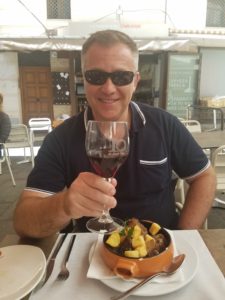
Toledo-Red
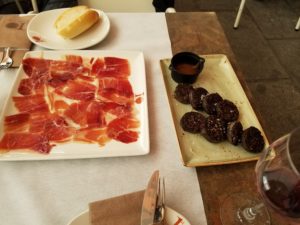
Toledo-Lunch
This was a perfect time for a little break, to taste Spanish food and wine. We headed to Plaza de Zocodover. Named after the market which was held here in Moorish times. It is still the city’s main square, with many cafés and shop. Pick a seat in one of the outside tables or walk inside for a quick tapas, either way, you will not be disappointed.

Toledo-cheers
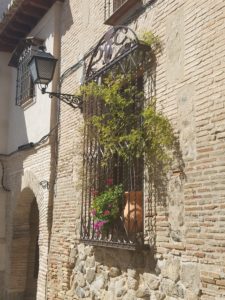
Toledo-Street
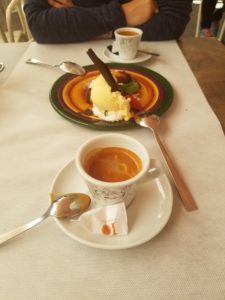
Toledo-coffee
Jewish and Muslim Toledo
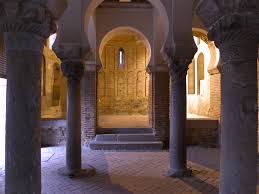
Mezquita-del-Cristo
Fed, rested and happy, we continued with our itinerary, exploring Toledo’s past as a melting pot of all major religions.
We headed towards Puerta del Sol, where Mezquita del Cristo de la Luz is located. This mosque, one of the city’s two remaining Muslim buildings, dates from around AD 1000.
Toledo’s Synagogues
From here we took turn back toward the Roman bridge to see two of the major city synagogues:
Sinagoga del Tránsito

Sinagoga-del-Tránsito
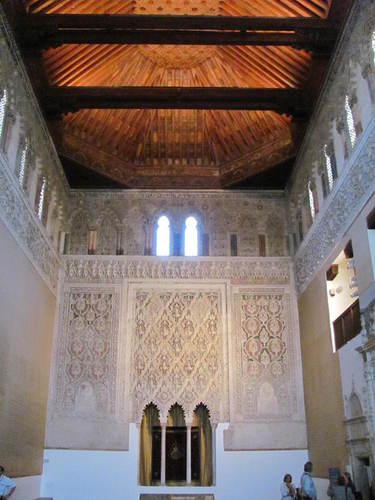
Sinagoga del Tránsito
The most elaborate Mudéjar interior in the city is hidden behind the humble façade of this former synagogue, built in the 14th century by Samuel Ha- Leví, the Jewish treasurer to Pedro the Cruel. The interlaced frieze of the lofty prayer hall fuses Islamic, Gothic and Hebrew geometric motifs below a wonderful coffered ceiling. The synagogue houses a museum of Sephardic (Spanish Jewish) culture. The items on display date from both before and after the Jews’ expulsion from Spain in the late 15th century.
Sinagoga de Santa María la Blanca
The oldest and largest of the city’s original synagogues, this monument dates back to the 12th–13th century. In 1405 it was taken over as a church by San Vicente Ferrer after the expulsion of the Jews. Restoration has returned it to its original beauty – carved stone capitals and wall panels stand out against white horseshoe arches and plasterwork. In the main chapel is a Plateresque altarpiece. In 1391 a massacre of Jews took place on this site, a turning point after years of religious tolerance in the city.

Sinagoga de Santa María la Blanca
If you only have time to see one synagogue in Toledo, make it this one!
Right before we entered the bridge, taking us across the river and back to the hotel, there was a last stop to make.
Iglesia de Santo Tome
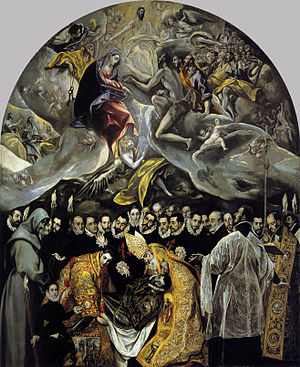
El-Greco The-Burial of the Count of Orgaz

Iglesia de Santo Tomé
Visitors come here mainly for El Greco’s masterpiece, The Burial of the Count of Orgaz. The Count paid for much of the 14th- century building that stands today. The painting, commissioned in his memory by a parish priest, depicts the miraculous appearance of St Augustine and St Stephen at his burial, to raise his body to heaven. It has never been moved from the setting for which it was painted, nor restored. Nevertheless, it is remarkable for its contrast of glowing and somber colors. In the foreground, allegedly, are the artist and his son (both looking out), as well as Cervantes. The church is thought to date back to the 11th century, and its tower is a fine example of Mudéjar architecture.
Dinner
By now it was an early evening. We refreshed in the hotel room and decided to try a nearby restaurant with an amazing view of Toledo, Restaurante Panorámico Cigarral Monte Re, which offers great Spanish food with a view. It was a fine choice.
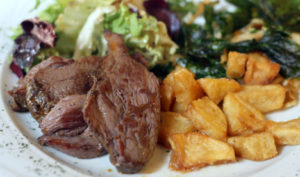
venison
Popular with locals and organized tours for its location and quality of food, Restaurante Panorámico Cigarral Monte Re offers reasonably priced choices of Spanish cuisine and wine. And with open terrace and large windows overlooking the river Tagus and Toledo’s main sights it is a hit. Dinner was spectacular and so was the sight of the medieval buildings glowing at sunset and then slowly illuminated by city lights.
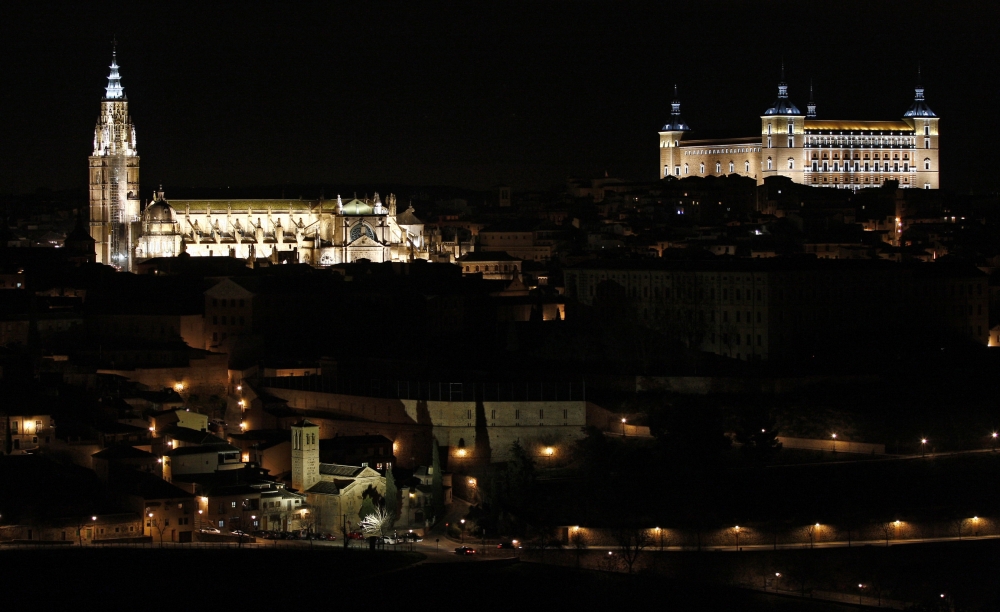
Toledo-at-night

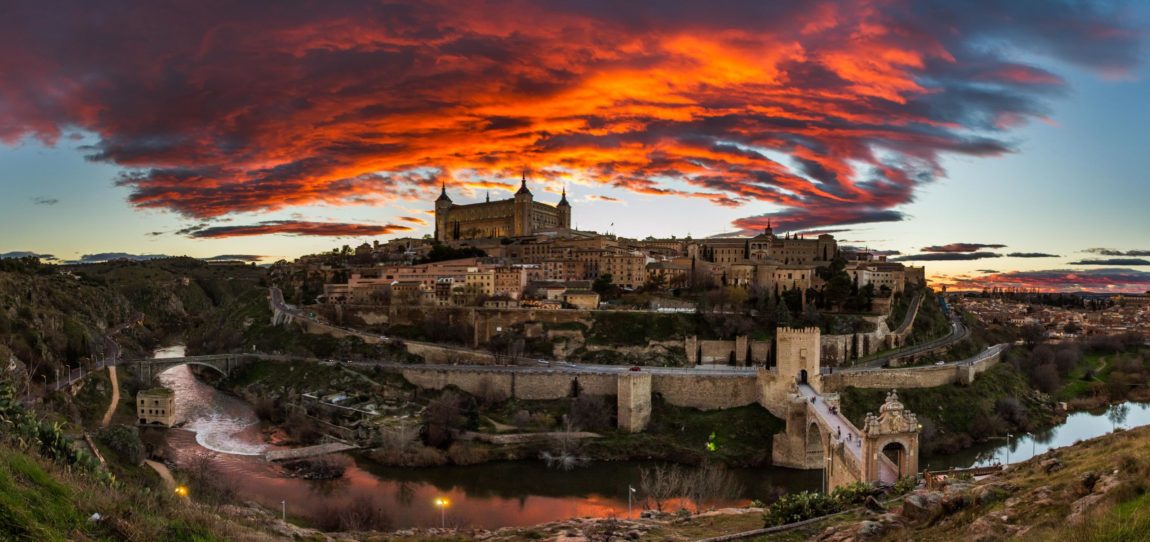
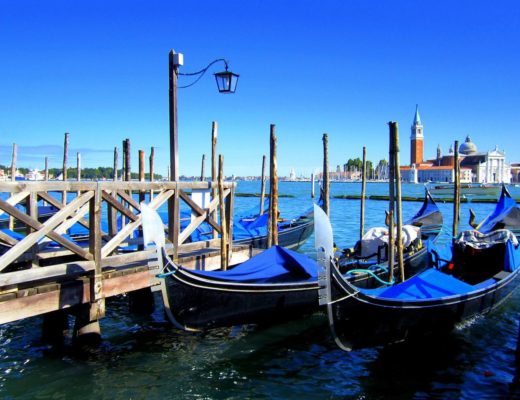

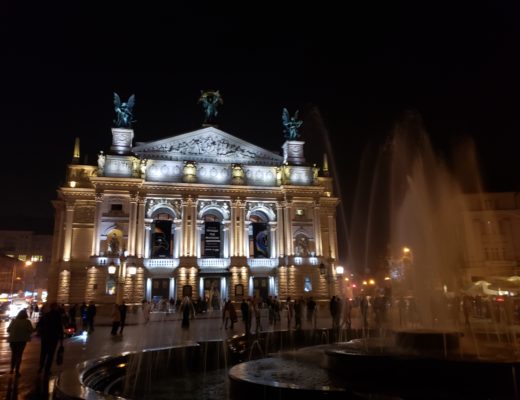
Perfect Day in Cordoba, Spain: Mezquita, Alcazar, San Rafael, Punta Romana and more..... - PointsTravels
July 28, 2018 at 7:36 pm[…] We drove from Toledo, it was, less than 3 hrs., and the highways were excellent. […]